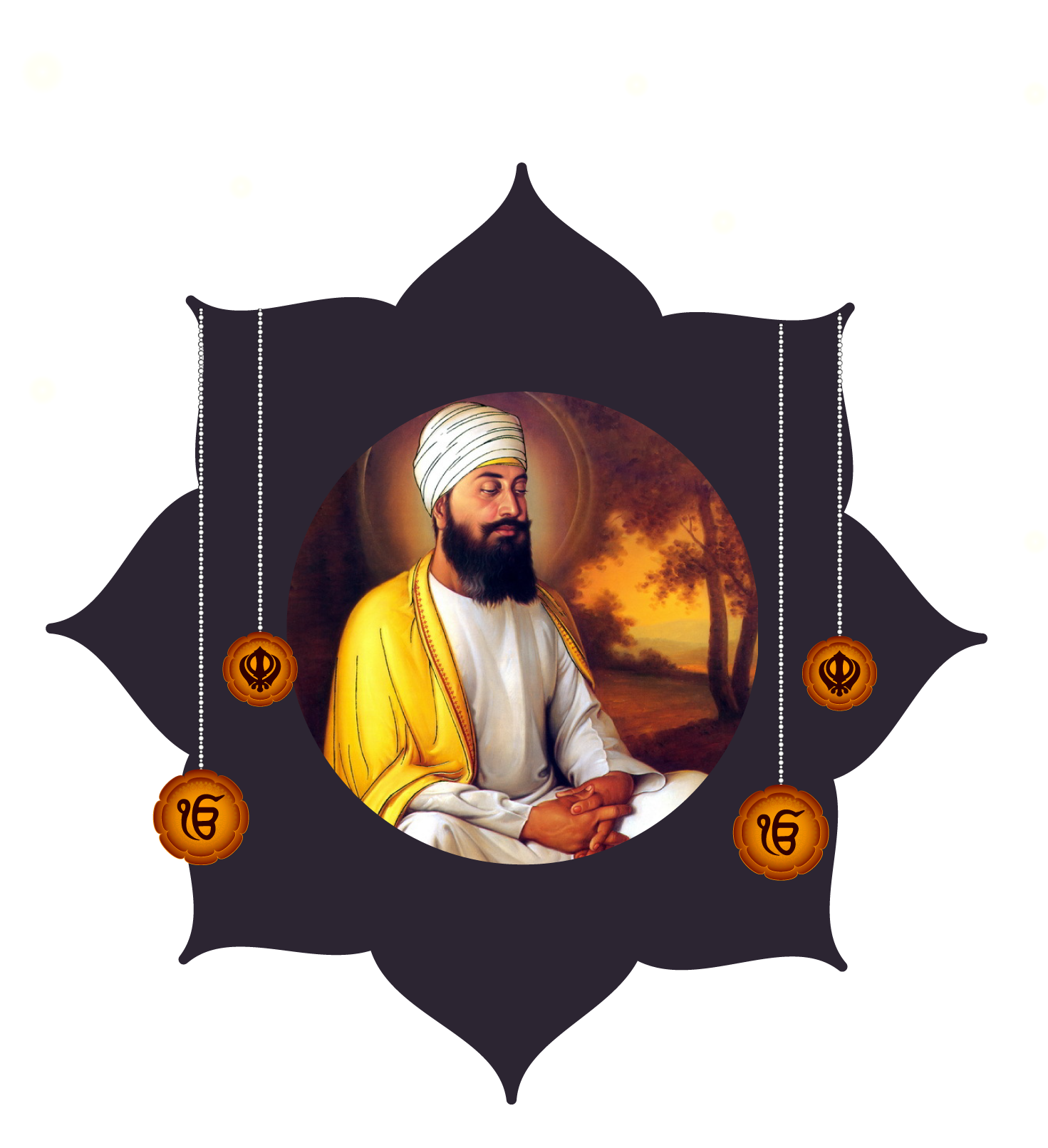
The ninth guru of the Sikhs, Guru Tegh Bahadur Ji, is revered not only for his contribution to the idea of universal brotherhood but also for showing how to make the ultimate sacrifice without hesitation in the face of oppression. In order to defend religious freedom, Guru Tegh Bahadur is renowned for having faced down the might of the Mughals.
Guru Tegh Bahadur Ji was born on 12th April, 1621 AD in Guru Ke Mehal, Amritsar Sahib, in the home of the sixth Guru, Guru Hargobind Sahib Ji and Mata Nanaki Ji. Baba Gurditta Ji, Baba Atal Rai Ji, Baba Suraj Mal Ji, and Baba Ani Rai Ji were Guru Ji's four brothers. Guru Ji had a sister named Bibi Veero Ji as well. Mata Damodari Ji gave birth to Baba Gurditta Ji and Bibi Veero Ji, while Mata Marvahi Ji gave birth to Baba Suraj Mal Ji and Baba Ani Rai Ji. Mata Nanaki Ji gave birth to Baba Atal Rai Ji and Guru Tegh Bahadur Ji. Guru Tegh Bahadur Ji married Mata Gujri Ji and had a son, Guru Gobind Singh Ji.
Tegh Mal was Guru Tegh Bahadur Ji's birth name. Guru Hargobind Singh Ji began sending Guru Tegh Bahadur Ji to Baba Buddha Ji, a devotee-Gursikh from the time of Guru Nanak Dev Ji, when he was four and a half years old, to learn various types of Vidhya (education). Bhai Gurdas Ji also shared his spiritual knowledge with Guru Tegh Bahadur Ji. Guru Ji was taught horseback riding, weapons, and war strategy by Bhai Bidhi Chand and Jati Mal. But his father had the most impact on Tegh Bahadur Ji's life. They learned about their grandfather Guru Arjan Dev Ji's Shaeedi (martyrdom) from Guru Hargobind Singh Ji. Guru Hargobind Singh Ji taught Guru Tegh Bahadur Ji about the lives of the previous Gurus and embodied his Miri-Piri philosophy during the family's travels. Tegh Bahadur Ji grew up with a love of poetry, the bravery of a warrior, and the resolve of a Sant-Sipahi (Saint Soldier). Guru Ji fought so bravely in a war that Guru Hargobind Sahib Ji changed their name from Tegh Malh to Tegh Bahadur Ji.
After leaving Bakala, Guru Tegh Bahadur Ji founded Chakk Nanaki (named after Guru Tegh Bahadur Ji's mother, and now known as Anandpur Sahib), a town near Kiratpur Sahib. Mata Nanaki Ji and his wife Mata Gujri Ji relocated there. After spending some time in Chakk Nanaki, Guru Ji and His family relocated to East India to continue doing Parchaar (spreading the message of Sikhi). Guru Tegh Bahadur Ji traveled extensively to spread Sikh teachings. Guru Tegh Bahadur Ji, like Guru Nanak Dev Ji, spent 20 years performing Parchaar throughout India. Guru Ji traveled to Haridwar, Agra, Patna, Bihar, and Assam, among other places. Guru Ji established new preaching centers and strengthened existing ones in this area. Guru Ji also founded Patna Sahib, the city where Guru Gobind Singh Ji was born.
Aurangzeb was the Mughal emperor during the time of Guru Tegh Bhadur Ji, and he decided to make India a Muslim country. He began levying a tax on non-Muslims and forcibly converting Hindu temples into mosques and Hindus into Muslims. As a result, Pandit Kirpa Ram Dutt and 15 other Kashmiri Hindu Pandits sought assistance from Guru Tegh Bahadur. Guru Ji promised help and told the Governor of Kashmir that if he can get Guru Ji to convert, the pandits will also convert. The Governor told Aurangzeb, who decided to have Guru Ji captured. Leading Islamic individuals tried to convince Guru Ji to convert, however, Guru Ji did not change Their mind, which infuriated Aurangzeb.
Aurangzeb decided to transport Guru Ji in a cage to Delhi. The Qazi (Muslim priest) issued a Fatwa (religious order) demanding that Guru Ji embrace Islam, perform a miracle to prove their divinity, or face death. Guru Ji became Shaheed (martyr) on 19th December 1675 AD at Chandni Chowk, Delhi. This place is known as Gurdwara Sri Sis Ganj Sahib now.
Source: https://bit.ly/3o9WULv
Source: https://bit.ly/3Pzqpm5